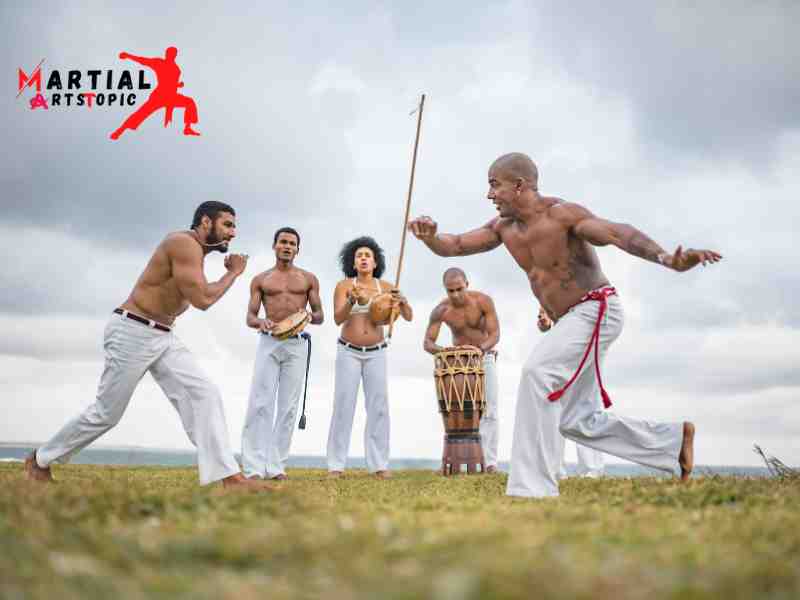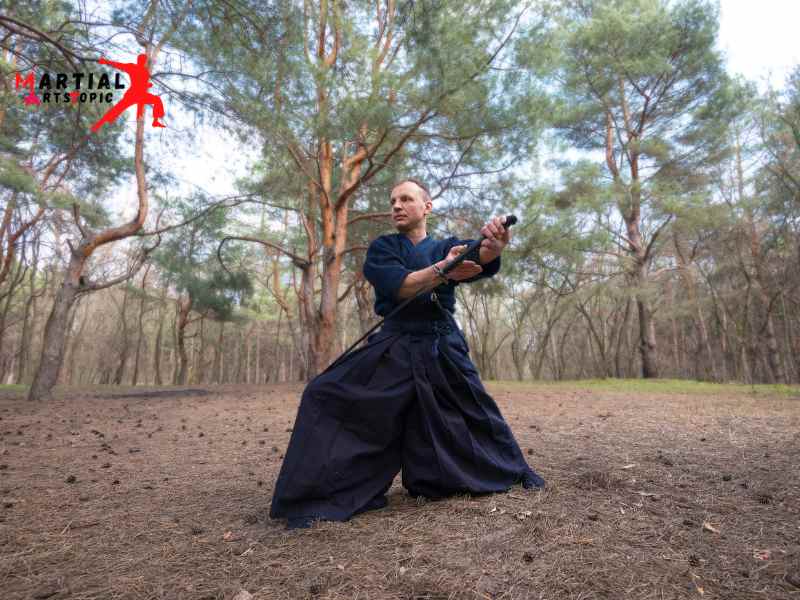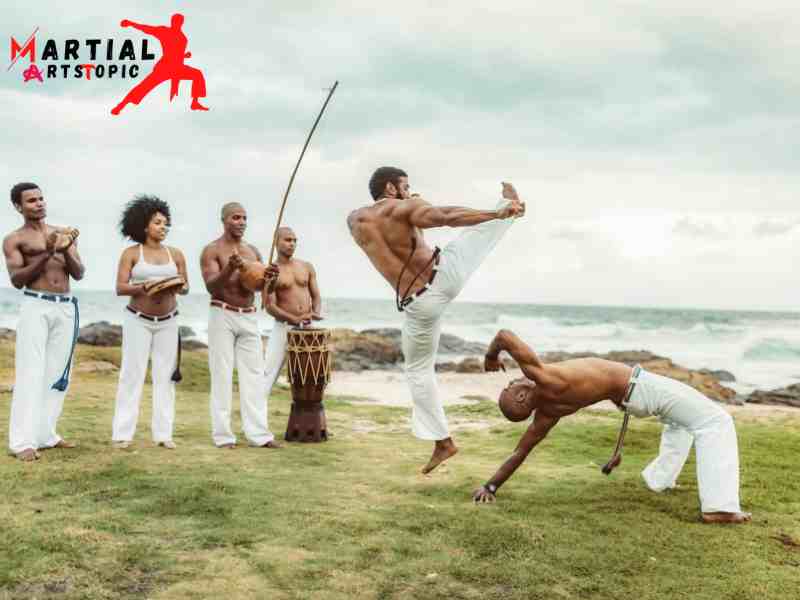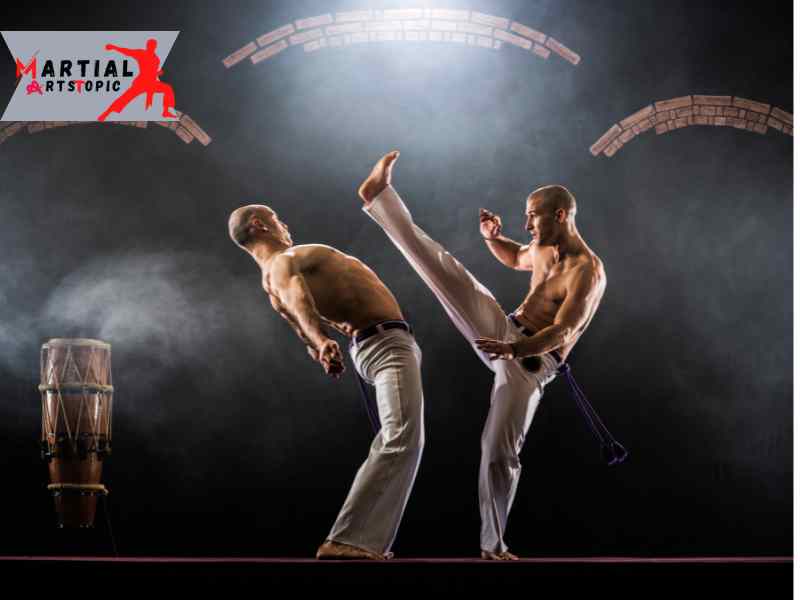
A Beginner’s Guide to Capoeira: Everything You Need to Know
Capoeira, also known as the “dance-fight,” is a captivating Brazilian martial art that combines elements of acrobatics, music, and self-expression. In this beginner’s guide to Capoeira, we will delve into everything you need to know about this unique and dynamic art form. From its rich history and cultural significance to its basic techniques and training tips, we will explore the essence of Capoeira and help you embark on your journey to mastering this exciting martial art. So, let’s dive into the world of Capoeira and discover its beauty and power together.
What is Capoeira?
What is Capoeira? Capoeira is a unique Brazilian martial art form that combines elements of dance, acrobatics, and music. Originating from the African slaves in Brazil, Capoeira has developed into a fascinating blend of combat and cultural expression. Its fluid and rhythmic movements characterized this art form, often performed to the accompaniment of traditional Brazilian instruments. Capoeira is not just a physical practice but also a way of connecting with the rich history and traditions of Brazil. It’s a captivating and dynamic art form that continues to captivate people around the world. If you’re curious about Capoeira and its rich heritage, you’ve come to the right place to learn more about this captivating martial art.
Definition and brief history of Capoeira
Capoeira: The Definition and Brief History of this Dynamic Martial Art.. Capoeira is a captivating martial art that seamlessly blends elements of dance, acrobatics, and music. Originating in Brazil, this unique art form has gained popularity worldwide for its engaging movements and cultural significance. In this blog post, we will delve into the definition and brief history of Capoeira, highlighting its roots and evolution.
Definition of Capoeira
Capoeira is an Afro-Brazilian martial art that combines elements of self-defense, acrobatics, dance, and music. Its fluid and rhythmic movements, as well as its use of intricate kicks, sweeps, and leg sweeps, characterize it. We often practice capoeira in a circle called a “roda,” where participants engage in a non-competitive dialogue, showcasing their skills and creativity.
Brief History of Capoeira
What is Capoeira? The origins of Capoeira can be traced back to the 16th century, during the African secondary trade in Brazil. Enslaved Africans brought their diverse cultural practices and rituals to Brazil, including various forms of martial arts. Capoeira emerged as a means of self-defense and resistance against the oppressive conditions of slavery.
Initially, Capoeira was practiced in secret, disguised as dance to avoid detection by secondary masters. Slaves would gather in hidden locations to practice and preserve their cultural heritage. The music played a crucial role in Capoeira, serving as a means of communication and signaling fresh movements during the practice.
Over time, Capoeira developed and incorporated acrobatics, making it not only a practical self-defense technique but also a captivating art form. It became a way for the enslaved Africans to express their freedom and preserve their cultural identity.
In the late 19th century, they abolished slavery in Brazil. With newfound freedom, Capoeira practitioners formed groups and began openly showcasing their skills. However, Capoeira still faced social stigmatization and was considered a dangerous activity associated with criminals.
In the 20th century, Capoeira went through a process of regularization and gained recognition as a legitimate martial art. Mestre Bimba, a renowned Capoeira master, played a significant role in this process by establishing the first Capoeira school and introducing a more structured approach to its practice.
Today, Capoeira has spread beyond the borders of Brazil and has become a global phenomenon. People of all ages and backgrounds practiced it, attracting enthusiasts who appreciate its physicality, artistry, and cultural heritage.
Origins of Capoeira
Capoeira: The Cultural Roots and Evolution of this Dynamic Martial Art. Capoeira, a captivating and energetic martial art form, has a rich history that is deeply rooted in the African diaspora and Brazilian culture. Originating in Brazil during the colonial era, Capoeira has developed over the centuries, merging elements of dance, acrobatics, music, and self-defense. In this blog post, we delve into the origins of Capoeira, tracing its journey from its humble beginnings to its status as a globally recognized art form.
The Origins of Capoeira: A Blend of Cultures
Capoeira’s history can be traced back to the transatlantic subordinate trade, where enslaved Africans were forcibly brought to Brazil. I believe Capoeira emerged as resistance and self-defense among these enslaved individuals. Denied their freedom, they sought solace and empowerment through the creation of a martial art that disguised its true nature as a dance.
It shrouded the precise origins of Capoeira in mystery, as historical documentation is scarce. However, it is widely accepted that Capoeira originated in the 16th century in the northeastern region of Brazil. They concentrated where most enslaved Africans. The cultural melting pot that was Brazil at the time played a crucial role in the development of Capoeira, as it incorporated elements of African, indigenous, and European traditions.
Capoeira: A Dance Disguised as Martial Art
To evade punishment and avoid detection by slaveholders, Capoeira practitioners cleverly disguised their martial art as a dance. Capoeira’s fluid and rhythmic movements, combined with its music and singing, provided the perfect cover for its practitioners to train and practice their self-defense techniques without arousing suspicion.
The music in Capoeira is an integral part of the art form, comprising instruments such as the berimbau, pandeiro, atabaque, and à gogo. These instruments, along with singing and clapping, create a vibrant atmosphere during Capoeira performances and roda (a circle where Capoeira is played and practiced). The music sets the rhythm and pace for the Capoeira players, enhancing the overall experience for both participants and spectators.
Capoeira’s Evolution: From Marginalized to Mainstream

For many years, Capoeira remained largely marginalized and associated with criminal activity because of its roots in the Afro-Brazilian community. However, in the early 20th century, a significant shift occurred in the perception of Capoeira. Mestre Bimba, a legendary Capoeira master, played a pivotal role in the transformation of Capoeira from an outlawed activity to an officially recognized martial art.
Mestre Bimba, with his innovative teaching methods and emphasis on discipline and technique, helped elevate Capoeira’s status and gain recognition from the Brazilian government. In 1932, he founded the first Capoeira school, providing a legitimate platform for the practice and preservation of this unique art form.
Since then, Capoeira has gained popularity not only in Brazil but also around the world. Today, people of all ages and backgrounds practiced it, transcending cultural boundaries and fostering a sense of community and camaraderie. We can find capoeira academies and groups in various countries, offering classes, workshops, and performances that showcase the beauty and dynamism of this captivating martial art.
Historical background
Capoeira, a captivating Afro-Brazilian martial art, has a rich historical background dating back to the 16th century. Originating from the African slaves brought to Brazil, capoeira was born out of their struggle for freedom and self-expression. Initially disguised as a dance, capoeira served as a tool for resistance against oppression and a means to preserve their cultural heritage. Over time, it evolved into a unique blend of acrobatics, music, and combat techniques. Today, capoeira has gained worldwide recognition for its dynamic movements, rhythmic music, and the philosophy of camaraderie and respect it promotes. The historical significance and cultural value of capoeira make it a fascinating art form that continues to inspire and captivate practitioners and enthusiasts alike.
Origins in Brazil during the colonial era
Origins in Brazil during the colonial era: Unveiling the Rich History of Capoeira. Capoeira, a captivating martial art form, has deep roots in Brazil’s colonial era. This vibrant practice originated among enslaved Africans who were brought to the shores of Brazil during the 16th century. With a rich history and cultural significance, Capoeira has developed into a powerful symbol of resistance, freedom, and expression.
During the colonial period, Brazil was a hub for the transatlantic secondary trade, with millions of Africans forcibly brought to the country to work on plantations. These enslaved individuals carried with them their diverse cultures, traditions, and practices, including various martial arts forms. Capoeira, with its unique blend of dance, acrobatics, music, and combat, emerged as a means for enslaved Africans to preserve their heritage and maintain a sense of identity amidst adversity.
Initially practiced in secret, Capoeira served as a powerful tool for self-defense and resistance against oppression. Subordinate owners strictly prohibited any form of martial arts, fearing potential uprisings or rebellions. To circumvent these restrictions, the enslaved Africans disguised Capoeira as dance, incorporating graceful movements and rhythmic music. This clever guise allowed them to practice and hone their combat skills while avoiding suspicion from their captors.
Over time, Capoeira became a symbol of unity and solidarity among the enslaved population. It served as a way to build camaraderie, share cultural traditions, and strengthen bonds within the community. The roda, a circle formed by participants, became the heart of Capoeira, where practitioners showcased their skills, engaged in friendly competitions, and celebrated their shared heritage. The roda also provided a safe space for cultural exchange and the passing down of ancestral knowledge from one generation to another.
As Brazil’s society underwent significant transformations, Capoeira continued to evolve and adapt. With the abolition of slavery in 1888, formerly enslaved individuals sought to redefine their identities and reclaim their cultural heritage. Capoeira became a crucial element in this process, as it transitioned from a secret practice to a recognized art form. Its integration into Brazilian society was further solidified when Mestre Bimba, a renowned Capoeira master, established the first official Capoeira school in the 1930s.
Today, Capoeira has gained international recognition for its cultural significance and as a dynamic martial art form. It has transcended its origins as a tool for survival and resistance, evolving into a global phenomenon practiced by people of all backgrounds and ages. Capoeira’s fusion of physicality, music, and rhythm continue to captivate practitioners and spectators alike, making it a cherished part of Brazil’s cultural heritage.
Importance and popularity of Capoeira worldwide
Capoeira, a Brazilian martial art form that combines elements of dance, acrobatics, and music, has gained immense importance and popularity worldwide. The global recognition of Capoeira can be attributed to its unique blend of physicality, culture, and history. As an ancient Afro-Brazilian tradition, Capoeira showcases the resilience and creativity of the African slaves who developed it as a means of self-defense. Today, Capoeira has become a symbol of Brazil’s rich cultural heritage and is practiced by millions of enthusiasts across the globe. The dynamic movements, rhythmic music, and vibrant energy of Capoeira have captivated people from all walks of life, making it a highly sought-after martial art form in various countries. Whether for fitness, cultural exploration, or personal growth, the worldwide appeal of Capoeira continues to grow, with practitioners embracing its holistic benefits and embracing its sense of community.
Elements and techniques of Capoeira

Capoeira: Exploring the Elements and Techniques of this Dynamic Martial Art Capoeira, also known as the “dance-fight,” is a fascinating Brazilian martial art that combines elements of dance, acrobatics, and music. With its rich history and unique blend of athleticism and creativity, Capoeira has captured the attention of people worldwide. In this blog post, we will dive into the various elements and techniques that make Capoeira so captivating.
Ginga: The Heartbeat of Capoeira
At the core of Capoeira lies the ginga, a fundamental movement that sets the rhythm and flow of the art. The ginga is a continuous swaying motion, where practitioners shift their weight from one leg to another, keeping their bodies in constant motion. This essential movement allows Capoeiristas to maintain balance, evade attacks, and seamlessly transition between offensive and defensive techniques.
Attacks and Takedowns
Capoeira incorporates a range of offensive techniques that showcase the practitioner’s agility and flexibility. These include kicks, punches, and sweeps, which are executed with precision and fluidity. Capoeiristas are known for their acrobatic kicks, such as the Meia Lua de Frente (Frontal Half Moon) and the Armada (Spiral). I often delivered these dynamic attacks with a surprising speed and power.
Defensive Movements and Evasions
In Capoeira, defense is as important as offense. Capoeiristas employ a variety of evasive maneuvers to avoid attacks while maintaining their rhythm and flow. These include dodges, ducks, and spins, which allow practitioners to swiftly evade strikes and counterattack with grace and efficiency. The combination of offensive and defensive movements creates a mesmerizing dance-like display.
Acrobatics and Aerial Maneuvers
One of the most impressive aspects of Capoeira is its incorporation of acrobatics and aerial maneuvers. Capoeiristas execute flips, handstands, and cartwheels seamlessly, adding an element of spectacle to their performances. These acrobatic displays not only showcase the practitioner’s physical prowess but also serve as strategic moves to confuse opponents and create opportunities for attack.
Music and Rhythm
Capoeira is not only a physical art but also a deeply musical one. The rhythmic beats of traditional instruments such as the berimbau, pandeiro, and atabaque set the tempo and energy of the game. Capoeiristas synchronize their movements with the music, creating a harmonious interplay between sound and motion. The songs sung in Portuguese during Capoeira sessions convey stories, traditions, and the spirit of the art.
Benefits of Capoeira

Benefits of Capoeira: The Art of Movement Capoeira is a unique and captivating martial art that combines elements of dance, acrobatics, and music. Originating in Brazil, Capoeira has gained popularity around the world for its dynamic movements and cultural significance. But beyond its artistic appeal, Capoeira offers a myriad of physical, mental, and social benefits. In this blog post, we will delve into the various advantages of practicing Capoeira and why you should add it to your fitness routine.
Full-Body Workout: Capoeira is a high-energy activity that engages your entire body. From kicks and spins to handstands and flips, Capoeira demands a wide range of movements that build strength, flexibility, and endurance. By practicing Capoeira regularly, you can expect to improve your cardiovascular health, increase muscle tone, and enhance your overall physical fitness.
Improved Coordination and Balance: Capoeira requires precise movements that involve a combination of agility, balance, and coordination. As you learn to flow seamlessly between different techniques and sequences, you will enhance your motor skills and body awareness. This can be beneficial for individuals who struggle with coordination or balance-related issues.
Enhanced Flexibility: Flexibility plays a crucial role in Capoeira, as it allows practitioners to perform fluid movements and execute advanced techniques with ease. Through regular practice, you will gradually improve your range of motion and increase your flexibility. Stretching exercises are an integral part of Capoeira training, helping to improve joint mobility and prevent injuries.
Cardiovascular Health: Capoeira is a highly dynamic activity that involves constant movement, kicks, and acrobatics, making it an excellent cardiovascular exercise. By engaging in Capoeira, you can elevate your heart rate, improve blood circulation, and strengthen your cardiovascular system. Regular participation in Capoeira classes can contribute to weight loss, increased stamina, and overall cardiovascular fitness.
Stress Relief and Mental Well-being: Like any physical activity, Capoeira releases endorphins, which are natural mood boosters. The rhythmic music, camaraderie, and expressive nature of Capoeira create a positive and enjoyable environment that helps to reduce stress and anxiety. The focus required to execute complex movements and sequences improves concentration, sharpens mental acuity, and enhances overall well-being.
Cultural Experience and Community: it deeply rooted Capoeira in Brazilian culture and history. Engaging in this martial art allows individuals to connect with a rich cultural heritage and gain a deeper understanding of its significance. Capoeira classes often foster a strong sense of community and camaraderie, providing an opportunity to meet new people, make lifelong friendships, and develop a support system.
Capoeira as a Martial Art and Fitness
What is Capoeira? Capoeira as a Martial Art and Fitness: Unleashing the Power Within In the realm of martial arts, there is a hidden gem that combines mesmerizing acrobatics, rhythmic movements, and fierce combat. Capoeira, a Brazilian martial art form, has been captivating practitioners and spectators alike for centuries. Beyond its artistic allure, Capoeira is also a dynamic fitness regimen that enhances strength, flexibility, and cardiovascular endurance. In this blog post, we will delve into the world of Capoeira, exploring its origins, its unique features, and the multitude of benefits it offers as a martial art and fitness practice.
Originating in Brazil during the era of slavery, African slaves developed Capoeira as a means of self-defense and cultural expression. It seamlessly blends elements of dance, music, and acrobatics with strategic fighting techniques. Fluid movements, quick transitions, and constant improvisation characterized capoeira, making it an incredibly versatile martial art.
One of the distinguishing features of Capoeira is the traditional Roda, a circle formed by participants and accompanied by live music. The music, played on traditional instruments such as the berimbau, pandeiro, and atabaque, sets the tempo and energy of the game. Inside the Roda, practitioners engage in a playful exchange of attacks, evasions, and rhythmic movements, all while maintaining a sense of camaraderie and respect.
Capoeira offers many benefits for both physical and mental well-being. As a fitness practice, it is a high-intensity workout that engages multiple muscle groups simultaneously. The constant movements, kicks, and acrobatics challenge the body, improving strength, agility, and coordination. The dynamic nature of Capoeira also enhances cardiovascular fitness, as practitioners constantly transition between various movements and intensities.
Capoeira promotes flexibility and body awareness. The intricate kicks, spins, and flips require a high level of mobility and range of motion. Regular practice of Capoeira helps improve flexibility, allowing practitioners to execute complex movements with ease. The emphasis on body awareness and control also translates into better balance and posture.
Beyond the physical benefits, Capoeira nurtures a strong sense of community and personal growth. The Roda serves as a platform for practitioners to connect, support, and learn from each other. The culture of respect and cooperation within the Capoeira community fosters personal development, discipline, and self-confidence. Through Capoeira, individuals not only enhance their martial arts skills but also develop valuable life skills that extend beyond the training environment.
From a self-defense perspective, Capoeira equips practitioners with effective strategies and techniques. The constant movement, evasive maneuvers, and deceptive tactics make it a formidable martial art. Capoeira emphasizes the importance of timing, rhythm, and agility, enabling practitioners to expect and respond to real-life threats effectively.
Whether you are seeking a unique martial art form, an engaging fitness practice, or a vibrant community to belong to, Capoeira offers it all. Its combination of artistry, athleticism, and cultural heritage makes it an enriching experience for practitioners of all ages and backgrounds. So why not step into the world of Capoeira and unleash the power within?
